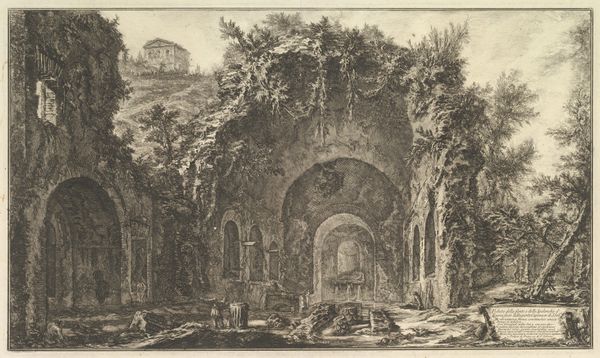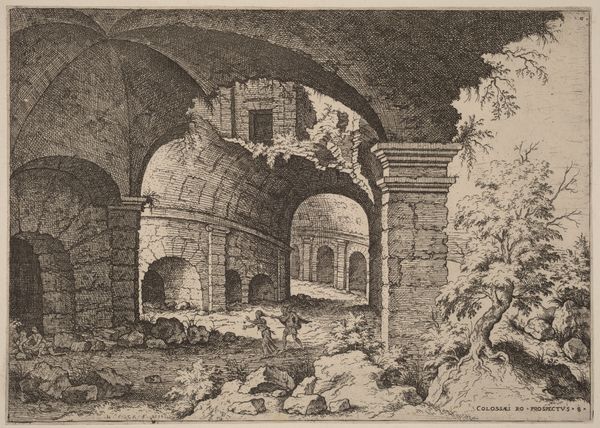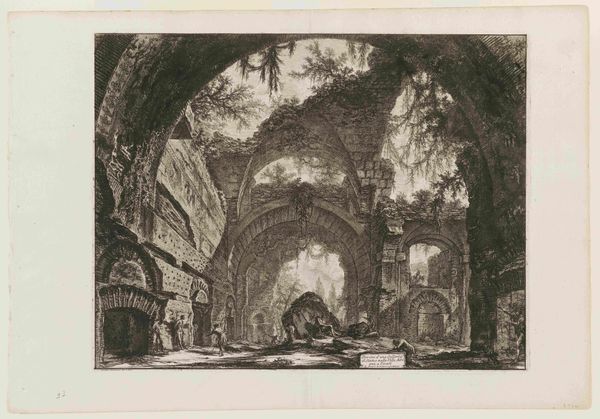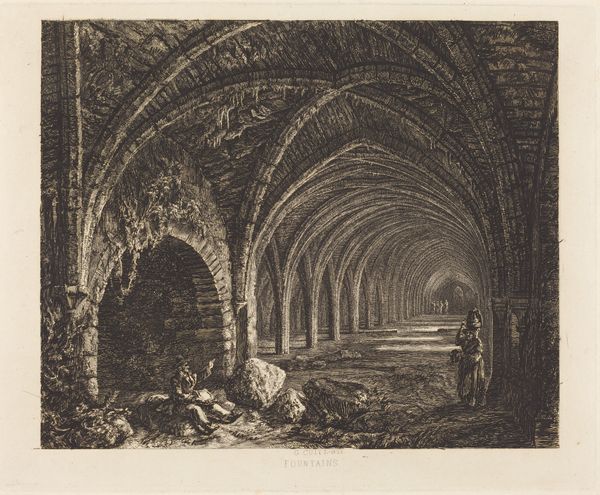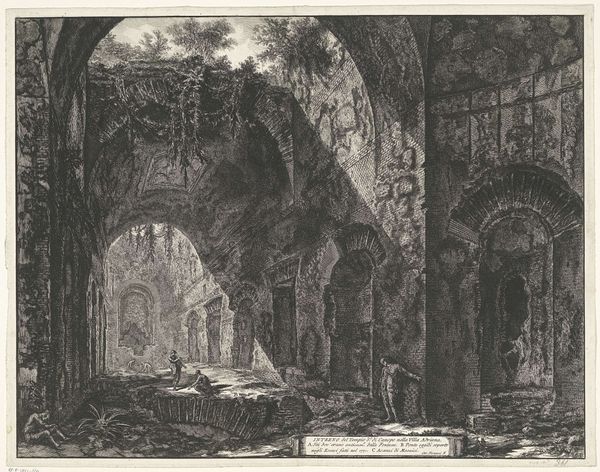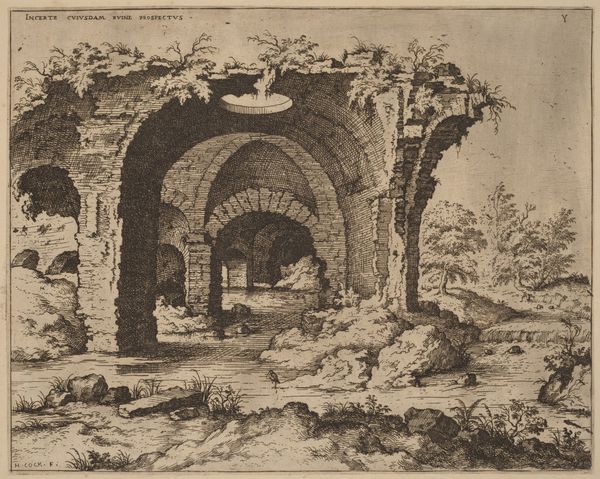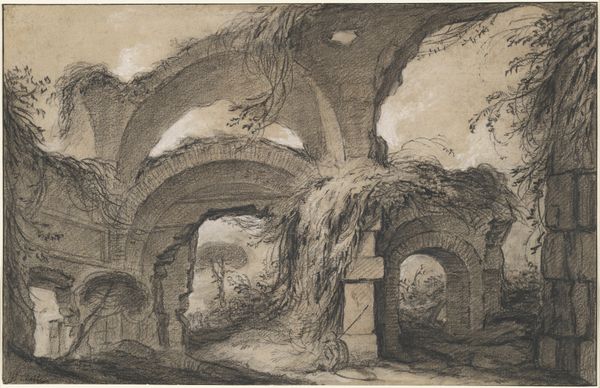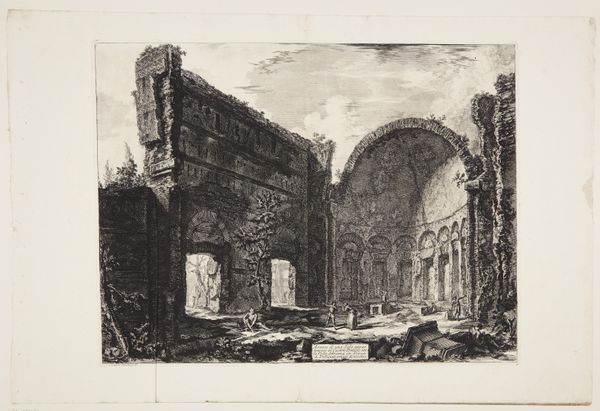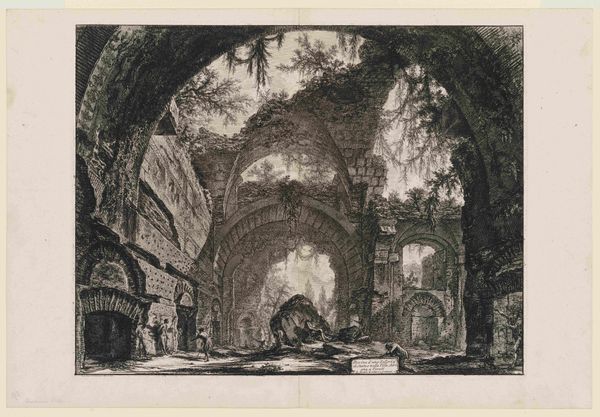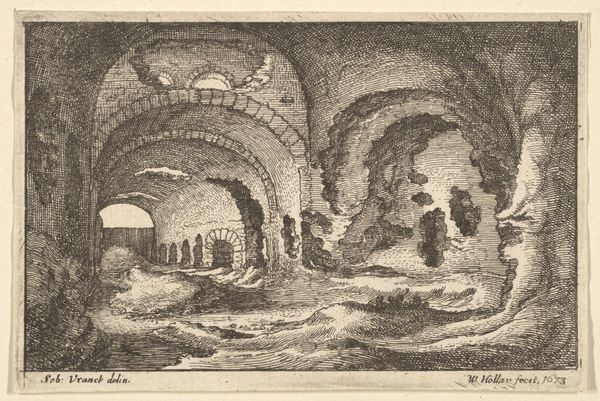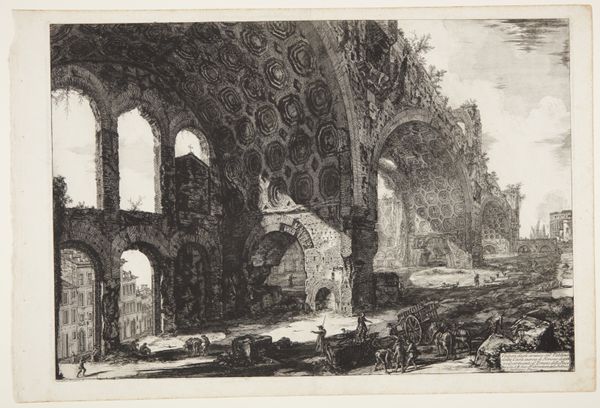
The so-called Villa of Maecenas at Tivoli. Interior with two figures in the opening of an arch above. (Veduta interna della Villa di Mecenate) 1759 - 1769
0:00
0:00
drawing, print, etching, architecture
#
drawing
#
neoclacissism
#
ink painting
# print
#
etching
#
history-painting
#
architecture
#
building
Copyright: Public Domain
Curator: Piranesi's etching, created sometime between 1759 and 1769, captures what was then known as the so-called Villa of Maecenas at Tivoli. It's a powerful interior view rendered in ink. Editor: The first thing that strikes me is the sheer drama. The scale feels monumental, the ruins eerily lit, as if this were a stage set for some ancient tragedy. Curator: Absolutely. Piranesi's skill lies in his ability to imbue these historical sites with emotional weight. The crumbling architecture, while reflecting physical decay, also evokes a sense of the passage of time and the fall of empires, common symbolism within neo-classicism Editor: I see that echoed in the almost theatrical lighting, drawing our eye towards the distant, illuminated end of the vault. This aesthetic interest in ruins as emblematic of cultural decline aligns perfectly with the political climate of the era, and reflects the tension between the idealized classical past, and a messy imperial present. Curator: Notice how the architectural details are rendered with such meticulous precision. These grand arches aren’t just structural elements; they're symbolic portals. Their repetition guides us deeper into the historical narrative. I am curious how these men ended up relaxing in these circumstances. Do you imagine their presence a means of reflecting upon civilization, its impact, how it comes and goes like breath? Editor: Intriguing! And consider, these etchings circulated widely. They weren't just artistic statements; they became tools shaping public perceptions of history, empire, and the role of the artist in preserving cultural memory, influencing contemporary politics by appealing to notions of impermanence. It brings awareness. Curator: A superb insight! The use of etching, allowing for multiple copies, transformed this vista into a powerful and repeatable icon. It transcends being just an image; it’s a cultural and historical artifact. Editor: So, as we contemplate this etching, we're not just seeing the remains of a Roman villa, but a potent visual statement on history's enduring presence and art's capacity to shape our understanding of it. Curator: Precisely. And hopefully, this artwork encourages us to reflect on how we interact with our past, today.
Comments
No comments
Be the first to comment and join the conversation on the ultimate creative platform.
